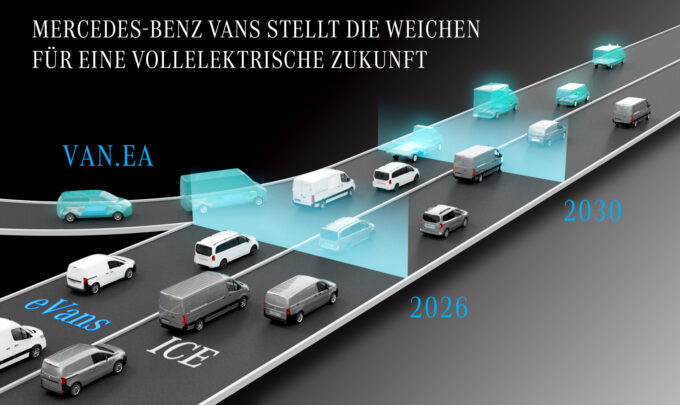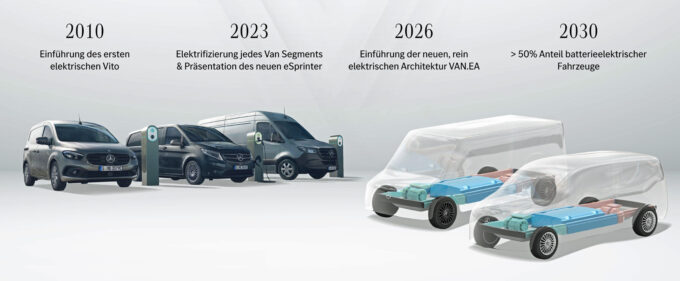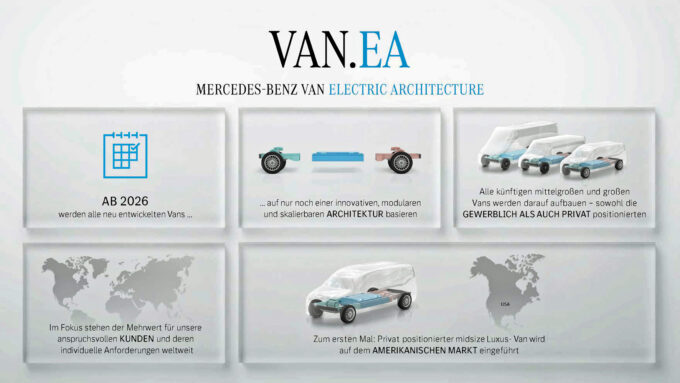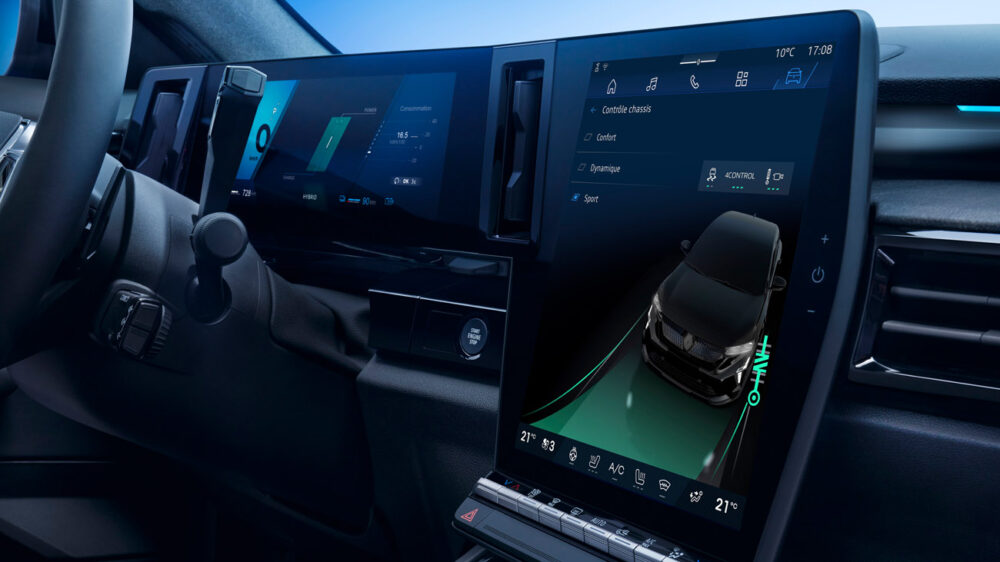Mercedes-Benz: Reducing fixed costs is the goal 🎥
FUTURE By introducing the new modular and scalable Van Electric Architecture (VAN.EA), Mercedes-Benz Vans aims to secure leadership in electric mobility and digital experiences.
Mercedes-Benz Vans is aiming for a BEV share of up to 20 percent of total vehicle sales by 2026 and more than 50 percent by 2030. The van manufacturer's financial targets are to reduce fixed costs by around 20 percent by the middle of the decade and to achieve a double-digit adjusted return on sales by the end of the decade.
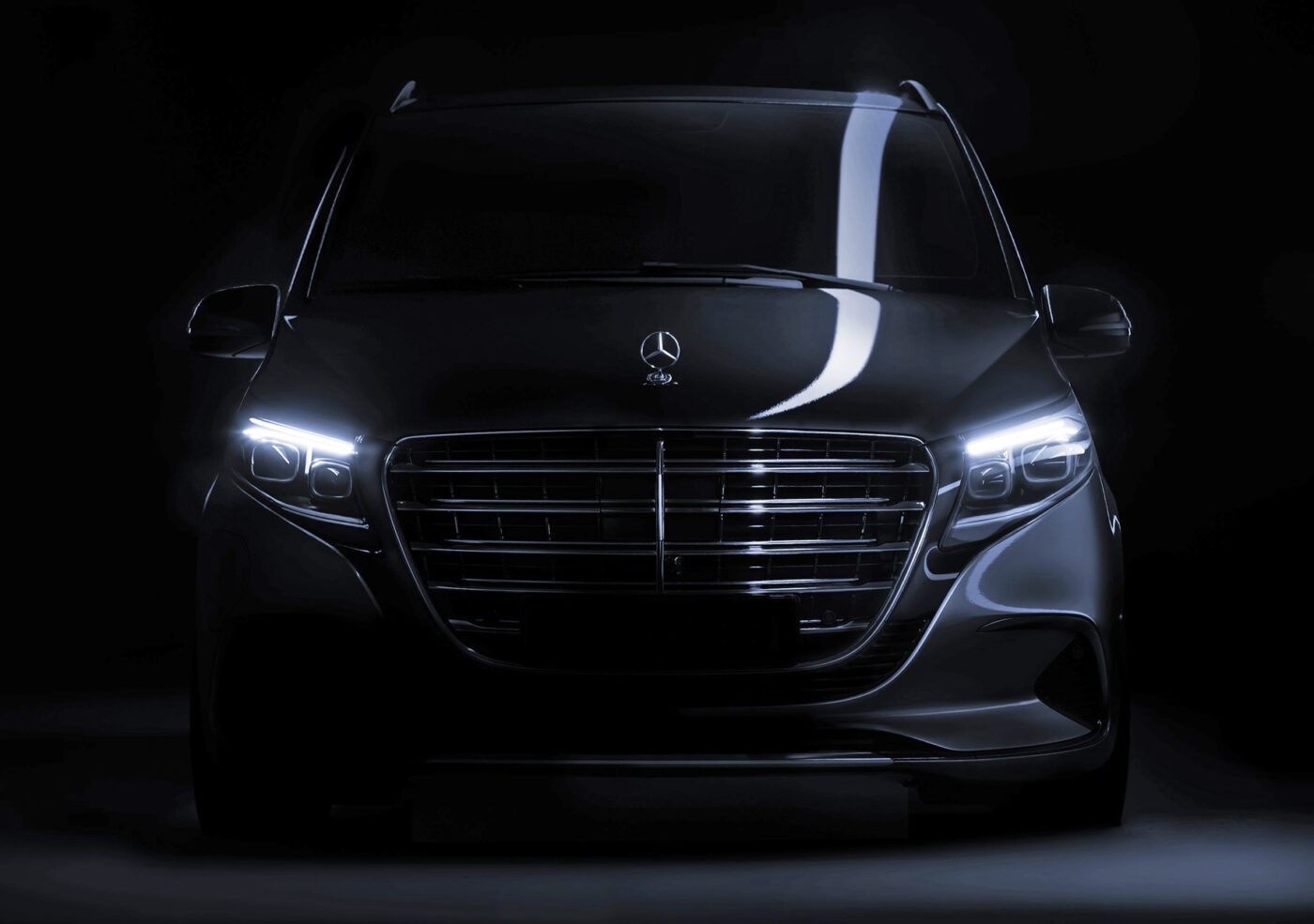
Sprinter started as a pioneer
Around 30 years ago, Mercedes-Benz Vans created the Sprinter segment - and to this day the Sprinter remains the flagship of the portfolio. As early as 2010, the business unit presented its first electric production van, the Vito E-Cell. In 2023, Mercedes-Benz Vans will offer fully electric variants in all segments from the compact to the mid-sized to the large van.
Supported by several pillars
Mercedes Vans will focus more strongly on premium segments and profitable growth. In doing so, the business unit will focus on regions, sales channels, products and industries with high margins. As the company serves both private and commercial customers, it will take a differentiated approach to each segment.
Europe is the division's strongest market, accounting for 60 percent of total global sales. The Stuttgart-based company aims to significantly increase its sales in the U.S. by 2030, and one lever for doing so is to expand the portfolio to include commercially used e-transporters. For the first time, it will also offer private vans based on VAN.EA with a new luxury positioning in order to meet the expectations of discerning customers even more closely, particularly in China.
From Las Vegas to Long Beach
Currently, the new e-Sprinter is the most efficient e-van. In October 2022, Mercedes-Benz Vans proved its efficiency with a test drive under the real conditions of an express delivery. The route led from Stuttgart to Munich and back with only one battery charge.
Most recently, the new e-Sprinter completed another test in the USA. A pre-production vehicle of the new model, equipped with a battery capacity of 113 kWh, drove the distance from Las Vegas to the Mercedes-Benz Tech Center in Long Beach without a charging stop. This corresponds to 443 kilometers.
Productivity and lean processes
As part of the introduction of VAN.EA, Mercedes-Benz Vans is reorganizing its global production network, and for the first time there will be a site exclusively for the production of large all-electric vans. The plant in Jawor, Poland, will set new standards for the production of electric vans, both in terms of productivity and lean processes as well as sustainability.







